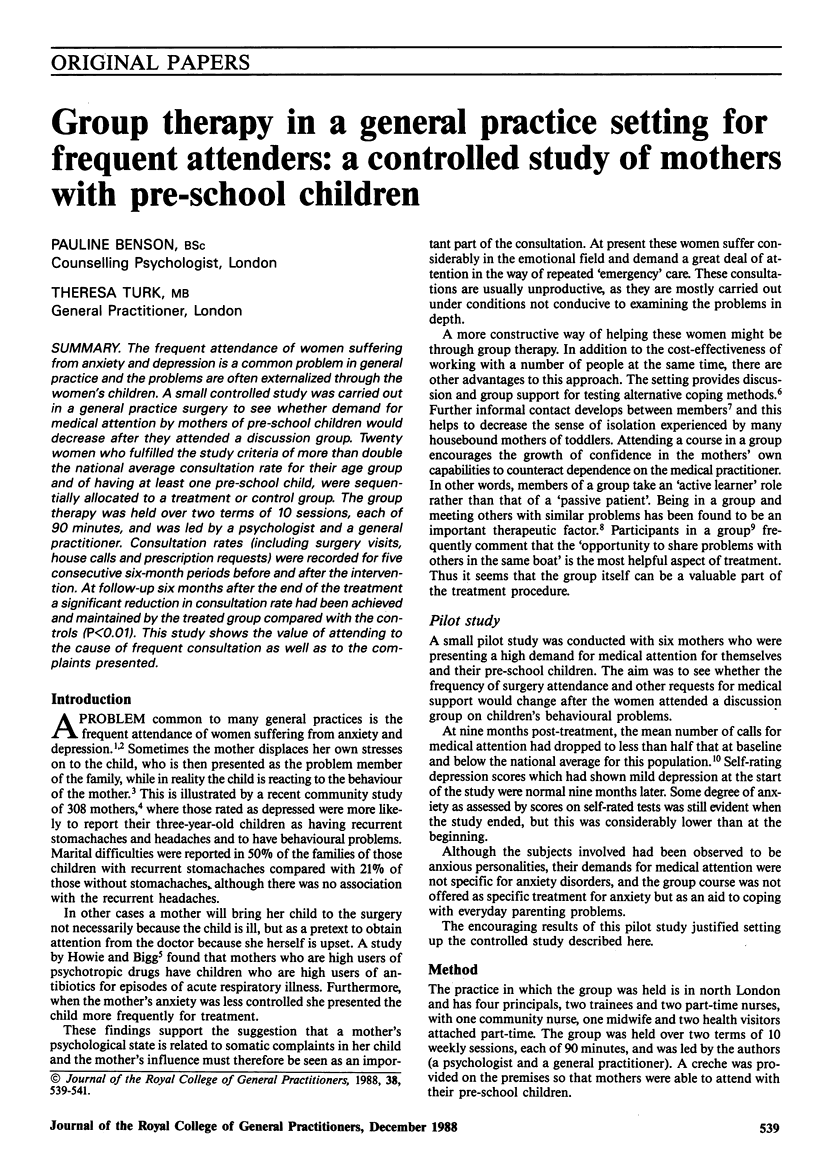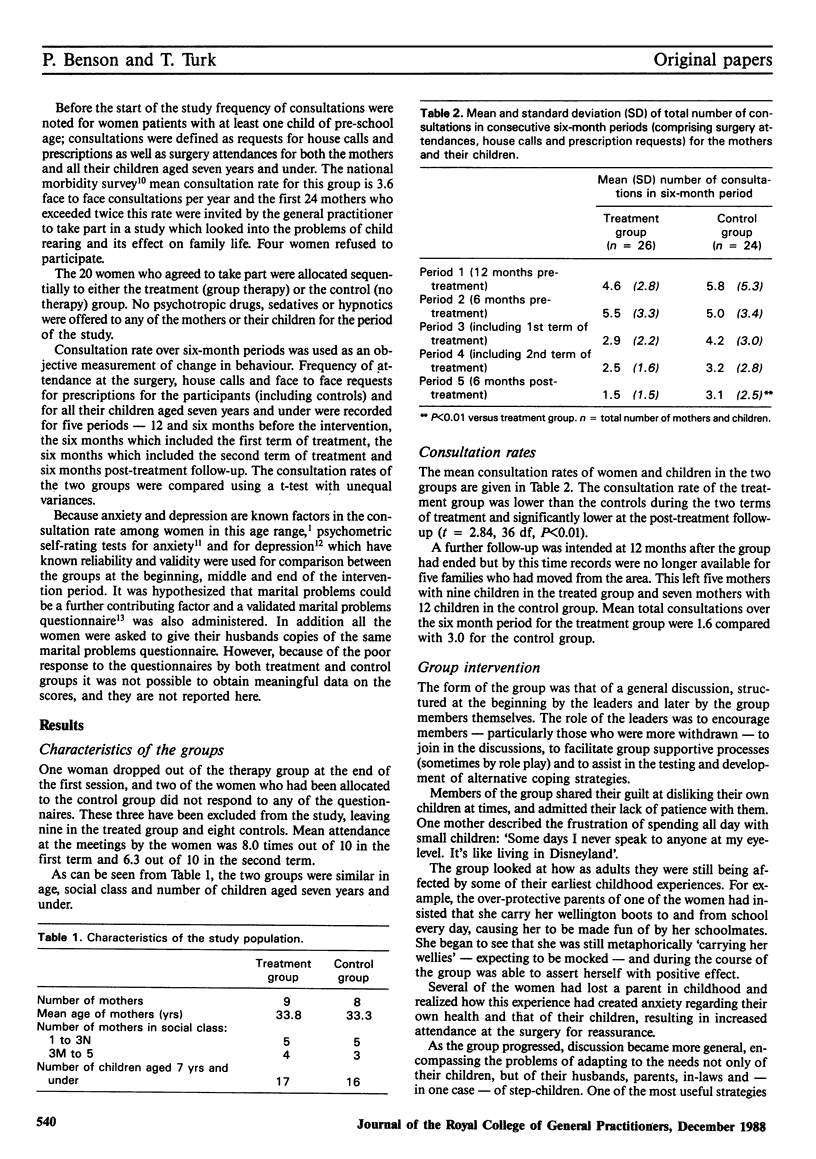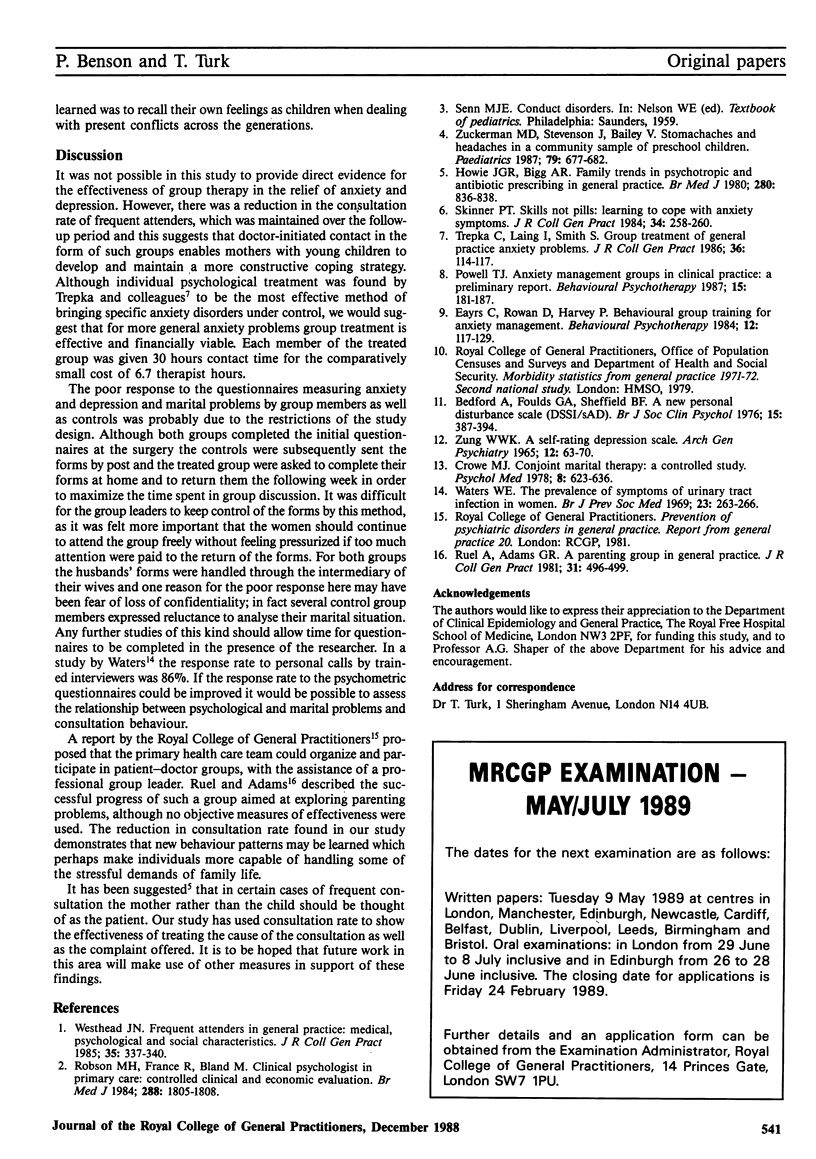Abstract
The frequent attendance of women suffering from anxiety and depression is a common problem in general practice and the problems are often externalized through the women's children. A small controlled study was carried out in a general practice surgery to see whether demand for medical attention by mothers of pre-school children would decrease after they attended a discussion group. Twenty women who fulfilled the study criteria of more than double the national average consultation rate for their age group and of having at least one pre-school child, were sequentially allocated to a treatment or control group. The group therapy was held over two terms of 10 sessions, each of 90 minutes, and was led by a psychologist and a general practitioner. Consultation rates (including surgery visits, house calls and prescription requests) were recorded for five consecutive six-month periods before and after the intervention. At follow-up six months after the end of the treatment a significant reduction in consultation rate had been achieved and maintained by the treated group compared with the controls (P<0.01). This study shows the value of attending to the cause of frequent consultation as well as to the complaints presented.
Full text
PDF


Selected References
These references are in PubMed. This may not be the complete list of references from this article.
- Bedford A., Foulds G. A., Sheffield B. F. A new personal disturbance scale (DSSI/sAD). Br J Soc Clin Psychol. 1976 Nov;15(4):387–394. doi: 10.1111/j.2044-8260.1976.tb00050.x. [DOI] [PubMed] [Google Scholar]
- Crowe M. J. Conjoint marital therapy: a controlled outcome study. Psychol Med. 1978 Nov;8(4):623–636. doi: 10.1017/s0033291700018833. [DOI] [PubMed] [Google Scholar]
- Howie J. G., Bigg A. R. Family trends in psychotropic and antibiotic prescribing in general practice. Br Med J. 1980 Mar 22;280(6217):836–838. doi: 10.1136/bmj.280.6217.836. [DOI] [PMC free article] [PubMed] [Google Scholar]
- Robson M. H., France R., Bland M. Clinical psychologist in primary care: controlled clinical and economic evaluation. Br Med J (Clin Res Ed) 1984 Jun 16;288(6433):1805–1808. doi: 10.1136/bmj.288.6433.1805. [DOI] [PMC free article] [PubMed] [Google Scholar]
- Ruel A., Adams G. R. A parenting group in general practice. J R Coll Gen Pract. 1981 Aug;31(229):496–499. [PMC free article] [PubMed] [Google Scholar]
- Skinner P. T. Skills not pills: learning to cope with anxiety symptoms. J R Coll Gen Pract. 1984 May;34(262):258–260. [PMC free article] [PubMed] [Google Scholar]
- Trepka C., Laing I., Smith S. Group treatment of general practice anxiety problems. J R Coll Gen Pract. 1986 Mar;36(284):114–117. [PMC free article] [PubMed] [Google Scholar]
- Waters W. E. Prevalence of symptoms of urinary tract infection in women. Br J Prev Soc Med. 1969 Nov;23(4):263–266. doi: 10.1136/jech.23.4.263. [DOI] [PMC free article] [PubMed] [Google Scholar]
- Westhead J. N. Frequent attenders in general practice: medical, psychological and social characteristics. J R Coll Gen Pract. 1985 Jul;35(276):337–340. [PMC free article] [PubMed] [Google Scholar]
- ZUNG W. W. A SELF-RATING DEPRESSION SCALE. Arch Gen Psychiatry. 1965 Jan;12:63–70. doi: 10.1001/archpsyc.1965.01720310065008. [DOI] [PubMed] [Google Scholar]
- Zuckerman B., Stevenson J., Bailey V. Stomachaches and headaches in a community sample of preschool children. Pediatrics. 1987 May;79(5):677–682. [PubMed] [Google Scholar]


